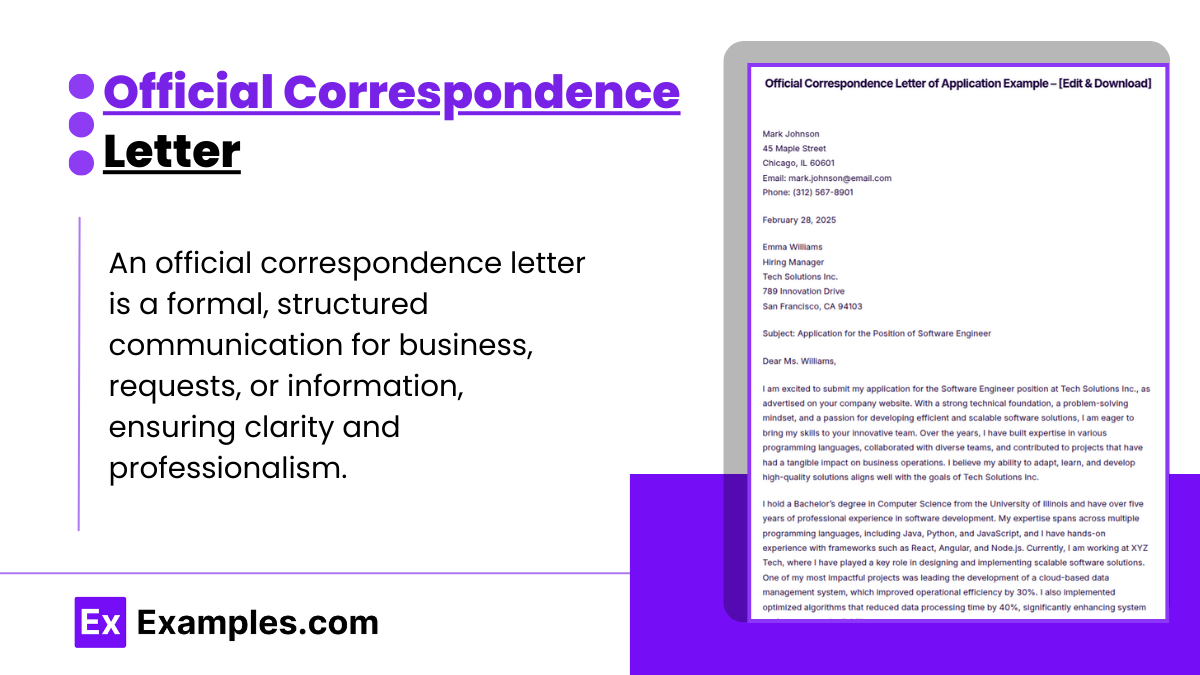7+ Official Correspondence Letter Examples to Download
Crafting an official correspondence letter requires precision and professionalism. This type of letter is pivotal in formal communications, often used for discussing business deals, making formal requests, or conveying official information. An effective correspondence letter should be clear, concise, and structured, ensuring the message is conveyed without ambiguity. By adhering to a standard format—starting with a formal greeting, followed by a clear statement of purpose, and concluding with a courteous sign-off—you can create a document that not only communicates efficiently but also upholds the professionalism expected in official exchanges. Whether you’re reaching out to a government agency, a business partner, or a professional group, mastering the art of official correspondence is a valuable skill in any professional setting.
What is Official Correspondence Letter?
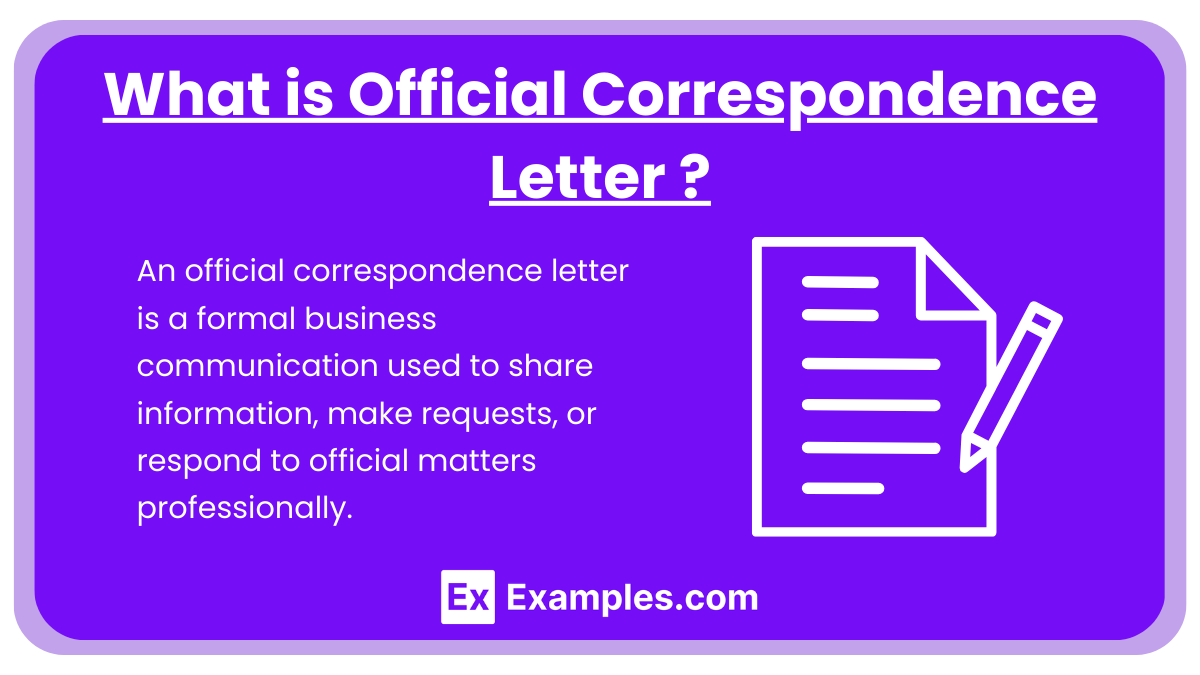
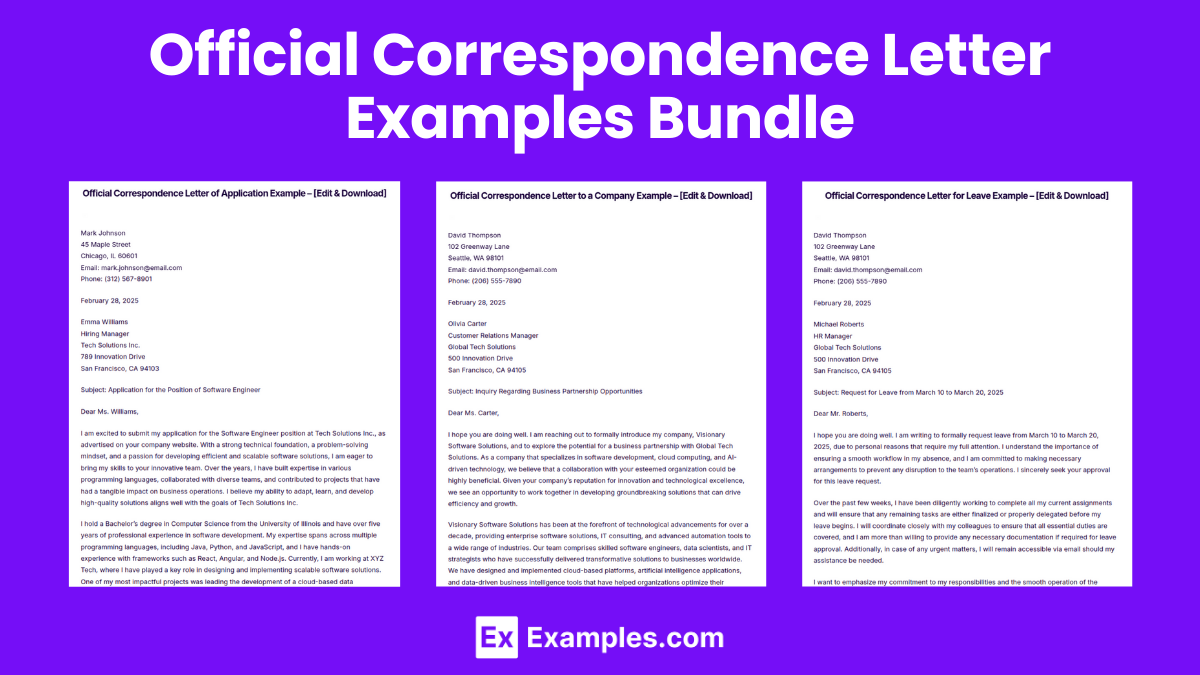
Official Correspondence Letter Examples Bundle
Official Correspondence Letter Format
Sender’s Details
Include your name, designation, company name (if applicable), address, email, and phone number.
Date
Write the date when the letter is written.
Recipient’s Details
Mention the recipient’s name, designation, organization, and address.
Subject
Clearly state the purpose of the letter in a single line.
Salutation
Use a formal greeting such as “Dear [Recipient’s Name]” or “Respected [Recipient’s Name]”.
Body
Introduction: Briefly state the reason for writing.
Main Content: Provide details, explanations, or requests.
Conclusion: Summarize key points and mention any required action.
Closing
Use a polite closing phrase such as “Sincerely” or “Best Regards,” followed by your name and designation.
Signature
Add your handwritten or digital signature (if applicable)
Official Correspondence Letter Example
Official Correspondence Letter Examples
Official Correspondence Letter of Application
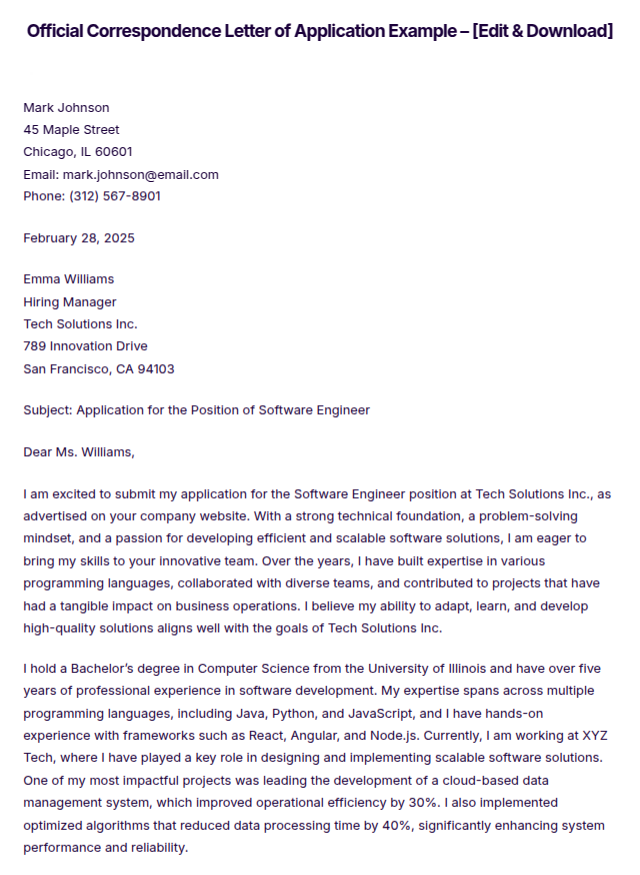
Official Correspondence Letter to a Company
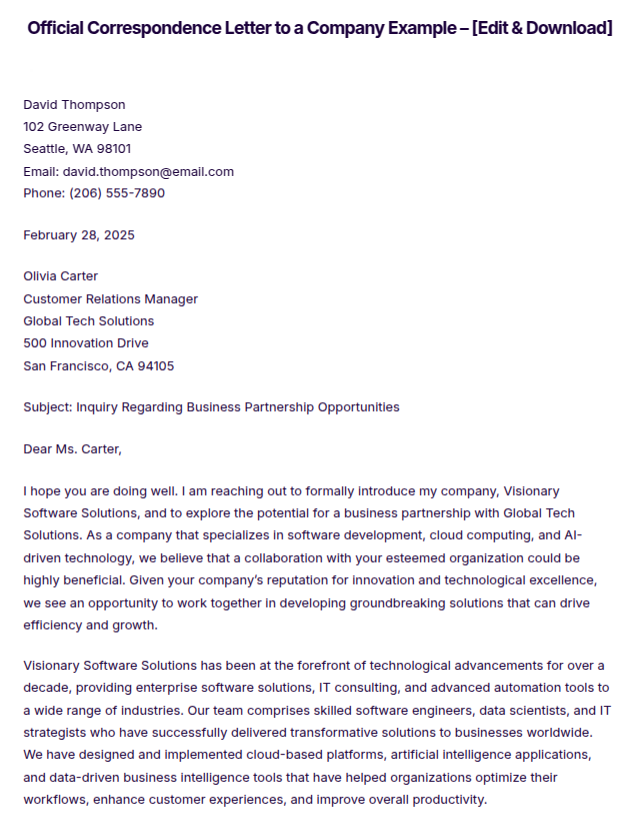
Official Correspondence Letter for Leave
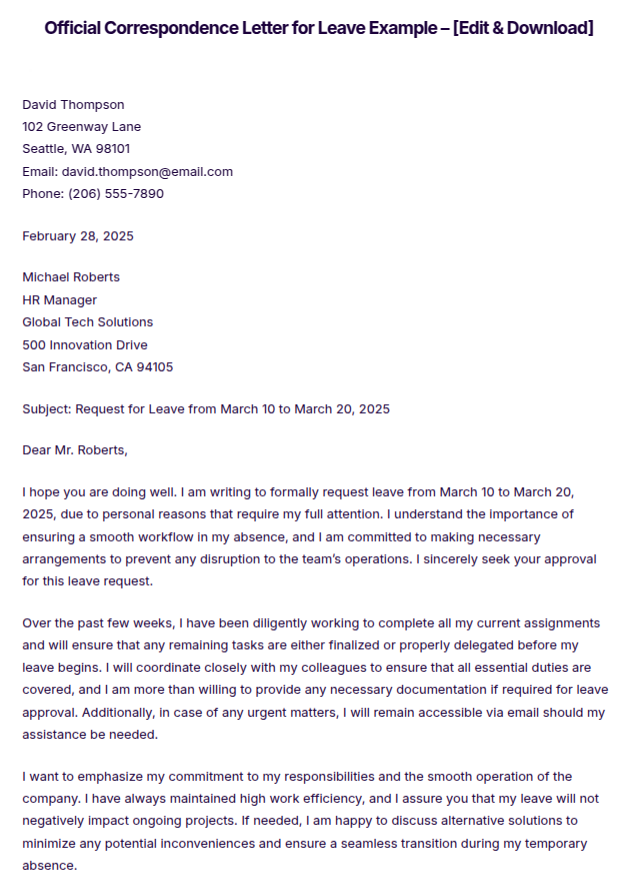
More Examples on Official Correspondence Letter
- Official Correspondence Letter for Permission
- Simple Official Correspondence Letter
- Official Correspondence Letter for Students
- Official Correspondence Letter for Job
- Official Correspondence Letter for Job Application
- Official Correspondence Letter for Business
- Official Correspondence Letter to Government
Official Correspondence Letter Samples
Actual Letter of Correspondence Example
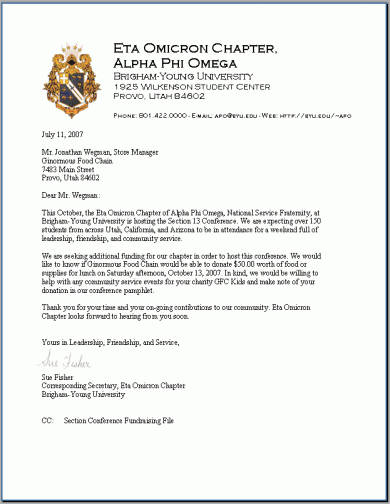
Official Correspondence Business Letter Format
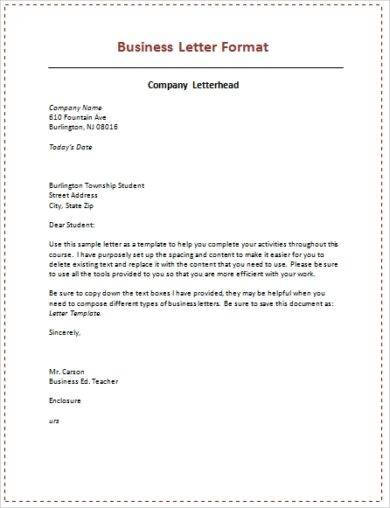
Official Correspondence Letter with Enclosure Example
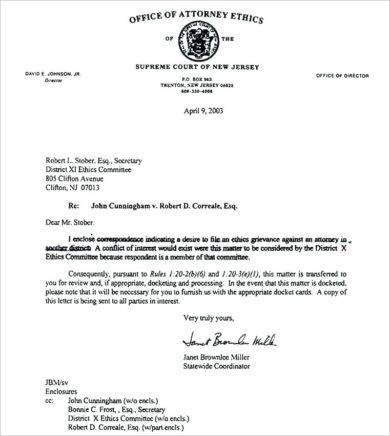
Sample Formal Correspondence Letter
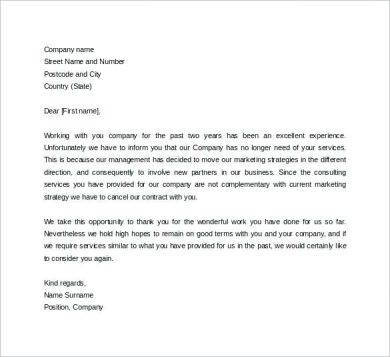
Types of Official Correspondence Letter
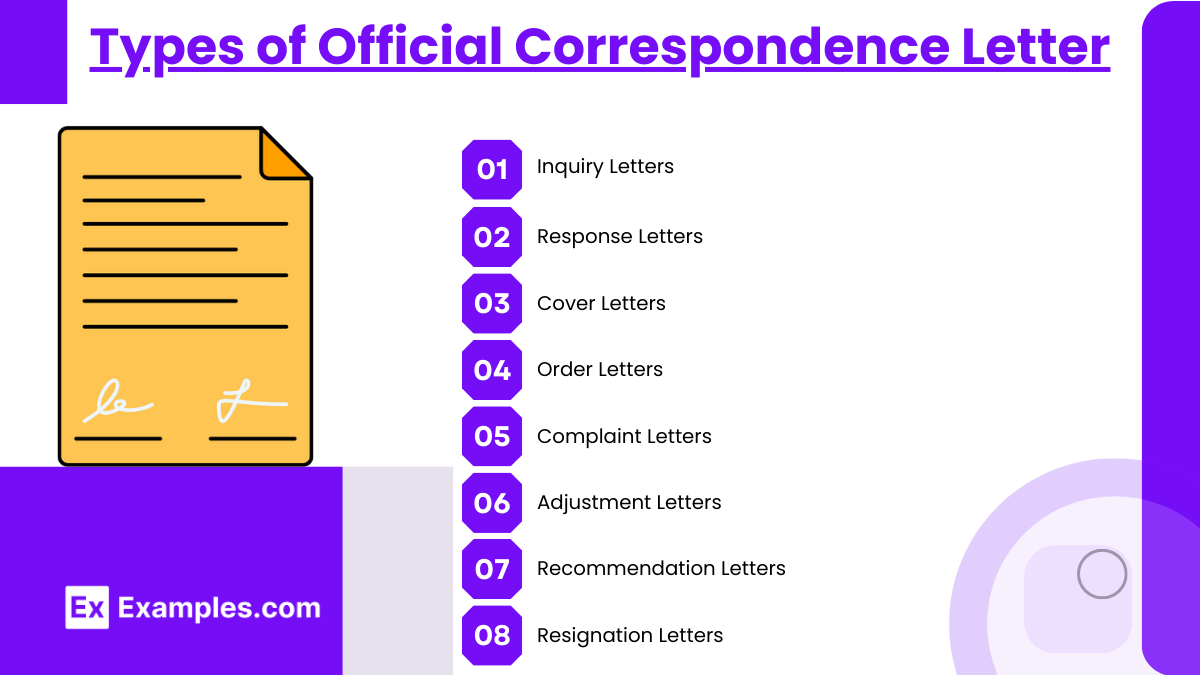
1. Inquiry Letters
Inquiry letters are used to request more information about a product or service. They are critical in business and academic contexts, where clear and precise information is sought.
2. Response Letters
Response letters are replies to inquiries or requests for information. They provide the needed information or explain why it cannot be furnished.
3. Cover Letters
Cover letters accompany resumes when applying for jobs. They introduce the applicant, highlighting key experiences or skills that fit the job description.
4. Order Letters
Order letters are sent by consumers or businesses to request goods or services. They specify the type and quantity of goods required, delivery dates, and payment terms.
5. Complaint Letters
Complaint letters address any dissatisfaction with a service or product. They describe the problem, how it affects the user, and what resolution is expected.
6. Adjustment Letters
Adjustment letters are responses to complaint letters. They explain what actions will be taken to address the customer’s complaint—whether it is a refund, replacement, or other solution.
7. Recommendation Letters
Recommendation letters are written to provide a reference for an individual. They are commonly used in academic admissions, scholarship applications, and job applications.
8. Resignation Letters
Resignation letters are formal notices informing an employer of the employee’s decision to leave their current position. They typically include the terms of departure and the employee’s last working day.
Essential Inner Qualities of a Good Correspondence Letter
The inner qualities of a correspondence letter refer to the way the content has been presented. This may include the language that has been utilized, the way the details in the letter’s body was arranged, and the general tone that was used in writing.
1. Simplicity
A good correspondence letter is never verbose. Instead, it uses a simple and easy language that every common man can comprehend.
Difficult words and jargon are highly discouraged in this type of correspondence because the writer can’t expect the letter’s recipient to refer to the dictionary for every complex word used. Flowery words, metaphors, exaggeration, and anything that may alter the facts of the letter in any way must be avoided. You may also see official letter for change of address examples.
2. Clarity
One of the most important qualities that a correspondence letter must contain is clarity. This refers to the letter’s general ability to be immediately and easily comprehensible to its audience.
The letter will be deemed unsuccessful in serving its purpose if its recipient doesn’t fully understand its content. Ambiguity is a major taboo in correspondence letters. There should be a full disclosure of details that the audience can understand, and even respond to in the future. You may also like official resignation letter examples.
3. Accuracy
Accuracy refers to the letter’s ability to lack errors in language, grammar, spelling, and punctuation. This attribute is often a reflection of the extent of the sender’s knowledge, and will be highly appreciated by its audience.
4. Completeness
A letter will only be considered complete if it has successfully provided all of the necessary information to its recipients. Even the tiniest aspect that is relevant to the transaction must be stated in the letter to fully equip its recipient with thorough knowledge about the proceedings. You may also check out official job application letter examples.
5. Relevance
The letter should only contain information that is relevant to the present arrangement, and those that the letter’s receiver will care to know about. Correspondence letters are known for their bluntness. They don’t sway from the main matter at hand and never talk about issues that may not be necessary for the present undertaking. You might be interested in official medical leave letter examples.
6. Courtesy
Especially in written correspondence wherein words and tone can be easily misinterpreted by the reader, courtesy must be observed more strictly.
Otherwise, you may unconsciously create a conflict between you and your recipient simply because they have misread your intentions. By never forgetting to include words like please and thank you, you are winning the hearts of your letter’s audience while easily avoiding misunderstandings of any sort. You may also see thank-you letter examples.
7. Neatness
Everybody appreciates a letter that is pleasing to look at, so make sure that yours has the same quality. Correspondence letters must never be handwritten, which means that neatness is easier to achieve because your letter will be computer generated. Avoid overwriting and other unnecessary elements in the physical appearance of your letter. You may also like acceptance letter examples.
Essential External Qualities of a Good Correspondence Letter
The external qualities of a good correspondence letter criticizes the general appearance of the document. This may include the type of paper used in writing, the quality of that paper, its color, its size, and other elements that may contribute to the overall look that the letter will take. You may also see how to write a verification letter examples.
1. Quality of Paper
Paper, as common and ordinary-looking as it is, can actually be pretty expensive, especially since you don’t want to use the cheap, yellowish, flimsy kind for corresponding with people who are important to your business.
Even the act of choosing the best quality paper, you are showing your customers and co-businessmen that you care enough about the communication to purchase good paper for it. The type of paper you utilize can speak equally about the economic status of your firm, and its scrupulous attention to detail, which means you must use it to your advantage to create a favorable impression upon your audience. You may also like business formal letter examples.
2. Color of the Paper
There is no rule about limiting the color of the papers you use for your letters to white, although it is indeed the most common. This is because the color white effortlessly gives the impression of elegance and class.
However, using different colors for certain transactions can make identifying the type of letter more quickly. The paper color your business uses is completely up to you. As long as it doesn’t reach the point wherein the color becomes a distraction from the letter’s true purpose. You may also check out business reference letter examples.
3. Size of the Paper
Correspondence letters must observe the standard size (A4) for writing. Otherwise, your letter may look too informal or inappropriate. Correspondence letters are not big on design or being fashionable, so it is pointless to try to be creative with your letter size. On the contrary, this type of letters is all about rigid formality and professionalism, which can all be acquired by strictly following the rules of letter writing.
4. Folding the Letter
This may be an act that you have come to overlook, and who can blame you? There is nothing difficult or complicated about folding a piece of paper.
However, correspondence letters must be folded properly and uniformly. If perfection can be achieved in the boring act of folding a letter, then aim for that. The letter should be carefully folded so that it will perfectly fit the envelope, and that no creases are visible in the folds. You might be interested in cover letter examples.
5. Envelope
The general rule to which your letter’s envelope is subjected to is that the size and the quality of the envelope should fit your letter’s size and type of paper.
How to Write an Official Correspondence Letter
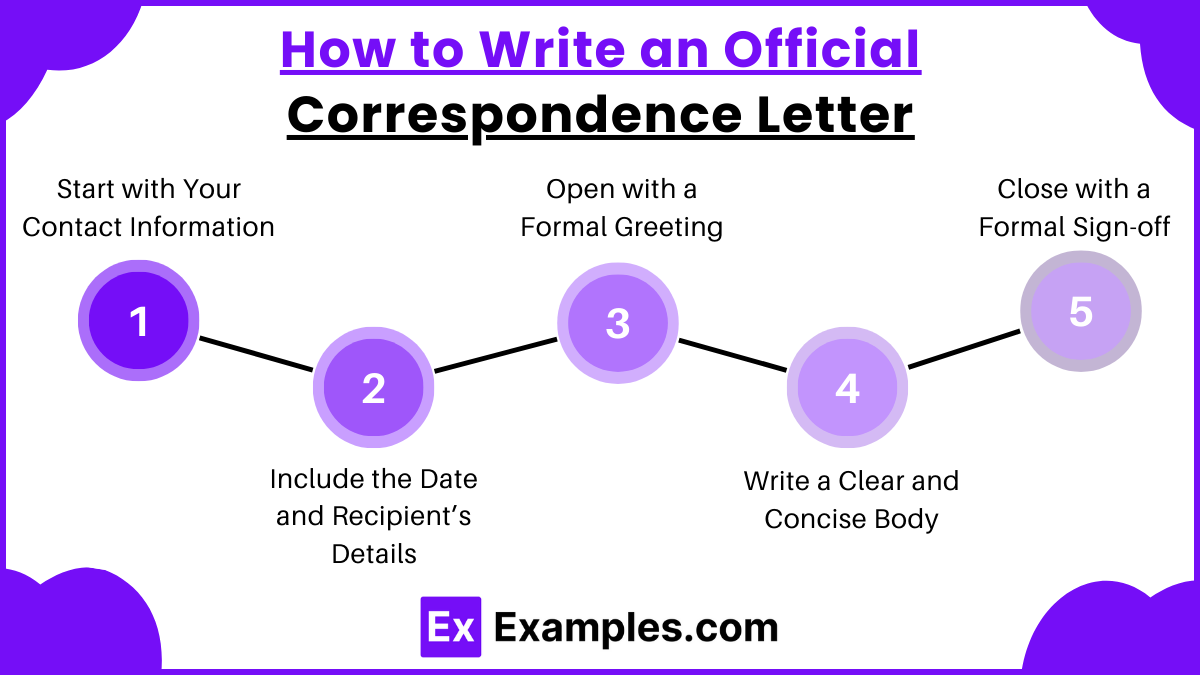
Start with Your Contact Information
Begin your letter by placing your contact details at the top. This should include your name, address, phone number, and email address to help the recipient identify who is sending the letter and how to respond.
Include the Date and Recipient’s Details
Directly below your contact information, note the date of the letter. Follow this with the recipient’s name, title, company, and address. Ensure you have the correct details to maintain professionalism.
Open with a Formal Greeting
Use a formal salutation such as “Dear [Title] [Last Name],” which shows respect towards the recipient. If the name is unknown, using “Dear Sir/Madam,” is an appropriate alternative.
Write a Clear and Concise Body
The body of your letter should clearly articulate the purpose of your correspondence. Keep your writing concise but ensure it is detailed enough to convey your message effectively and professionally.
Close with a Formal Sign-off
End the letter with a polite closing, such as “Sincerely,” followed by your signature and printed name. This maintains the formal tone of the correspondence.
Tips for Writing an Official Correspondence Letter
- Be Clear and Concise: Use simple, direct language to ensure your message is easily understandable. Avoid overly complex words or jargon unless necessary for the context of your letter.
- Maintain a Professional Tone: Even if you know the recipient personally, keep the tone formal and respectful. This helps establish and maintain a professional relationship.
- Proofread Your Letter: Before sending your letter, carefully check for any grammatical errors, typos, or inaccuracies in your information. A clean, error-free letter reflects well on you and your organization.
- Use a Standard Format: Stick to a recognized business letter format. Start with your contact information at the top, followed by the date, the recipient’s details, a formal greeting, the body of the letter, and a formal closing.
- Be Specific: Clearly state the purpose of your letter in the first paragraph. If you are making a request, state it clearly and provide all necessary details the recipient needs to fulfill it.
FAQs
Why is an Official Correspondence Letter Important?
It ensures clear, professional, and documented communication between individuals, businesses, or government entities, maintaining a formal record and preventing misunderstandings in professional and legal matters.
When Should You Use an Official Correspondence Letter?
Use it for professional matters such as job applications, business requests, legal communications, official complaints, or any formal interaction requiring a documented record.
What Tone Should an Official Correspondence Letter Have?
It should be formal, polite, clear, and professional, avoiding slang or informal language while ensuring clarity and respect in communication.
How Long Should an Official Correspondence Letter Be?
An official correspondence letter should be concise and to the point, ideally one page, covering all necessary details while maintaining clarity and professionalism.
Can an Official Correspondence Letter Be Sent via Email?
Yes, an official correspondence letter can be sent via email or physical mail, but it should maintain a formal tone, structured format, and professional language regardless of the medium.


